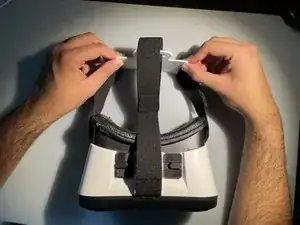
Headband
A virtual reality (VR) headset is a head-mounted device that enables users to experience virtual reality environments and simulations, while augmented reality (AR0 headsets immerse digital enhancements to the environment around you. These headsets are primarily used for various applications, including gaming, training, education, entertainment, and even therapeutic purposes.
VR headsets can be categorized into two main types: standalone and tethered. Standalone VR headsets are self-contained devices that house all the necessary components, such as processors and displays, within the headset itself. They do not require any external devices to function and offer increased mobility and convenience. Tethered VR headsets, on the other hand, rely on being connected to a compatible device like a gaming PC or console, which provides the processing power and content for the VR experience.
The early history of VR headsets dates back to the 1990s when prototypes like the Sega VR were developed but never released for consumer use due to limited technology and commercial viability. However, significant progress has been made in recent years, leading to the widespread adoption of VR technology.
One of the pioneering VR headsets that made a significant impact on the industry was the Oculus Rift. It gained popularity after a successful crowdfunding campaign and began shipping in March 2016. Since then, many other manufacturers have entered the market, offering a wide range of VR headsets with various features and price points. AR headsets have become more integrated with these VR components, and most of the headsets seen today combine both of these technological principles.
Modern VR and AR headsets typically feature high-resolution stereoscopic head-mounted displays (HMDs) that deliver separate images to each eye, creating a 3D effect and enhancing immersion. They are equipped with advanced motion-tracking sensors, which can include precise accelerometers, gyroscopes, and sometimes external tracking cameras or base stations, allowing for accurate tracking of users' head and body movements in virtual space.
To complement the VR and AR experience, many headsets come with integrated spatial audio or support for high-quality headphones, further enhancing the sense of presence and realism. Additionally, some VR and AR headsets, like the Apple Vision Pro incorporate eye-tracking technology, which opens up possibilities for more natural interaction and foveated rendering, an advanced rendering technique that improves performance and visual fidelity by focusing processing power on where the user is looking.
In addition to the headsets themselves, these VR/AR experiences often require handheld controllers or other input devices to interact with virtual environments. These controllers can vary in design and functionality, depending on the specific headset and the applications it supports.
The applications of VR and AR headsets have expanded beyond gaming and entertainment. They are now extensively used in various industries for training purposes. For example, medical professionals use VR and AR to simulate surgical procedures, providing a safe and realistic environment for practice and skill development. The military also employs this technology for training soldiers and personnel, allowing them to experience simulated combat scenarios and improve their tactical skills without real-world risks.